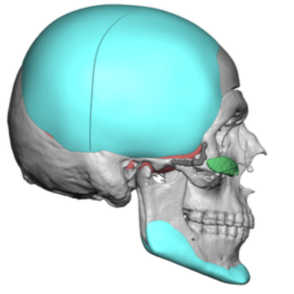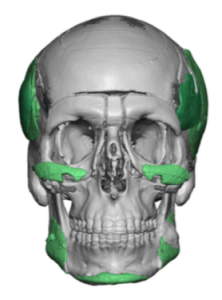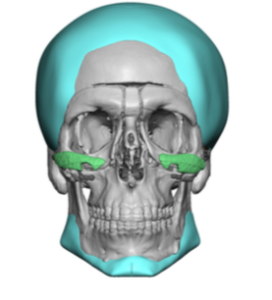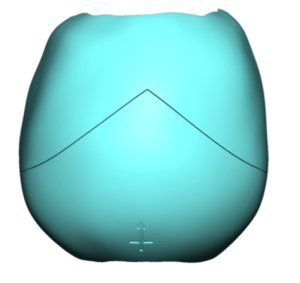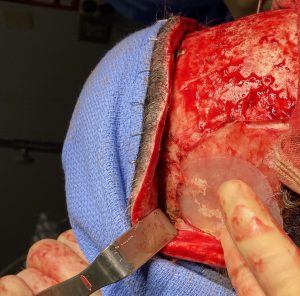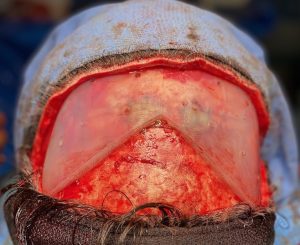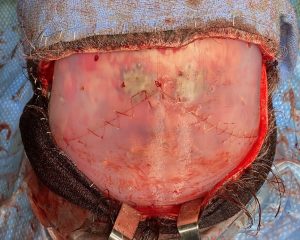Background: Custom skull implants can be made in an endless number of designs and can treat a wide variety of head shape issues. Most custom skull implant designs come down to either partial or complete types. This relates to how much of the skull’s surface area is covered by the implant. Partial implant designs are when less than 50% of the skull is covered. More complete designs are when greater than 50% and often 75% of the skull’s surface is covered in the implant’s footprint.
By far the vast majority of custom skull implants are to treat a particular surface deficiency and its design may blend over into other surfaces to create a harmonious /natural looking augmentation. But when larger surface implants are designed the usual reason is to smooth out the general surface of the skull and/or to create a fuller appearing head shape. Thin thickness implants when covering a large surface area create a greater volumetric effect than one would think. So, for example, a 5mm thick implant that covers most of the skull has a bigger effect than the simple linear measurement of 5mms would suggest.
In larger more complete skull implant designs there are two important intraoperative considerations. First, is there enough scalp to allow a competent incisional closure that does not risk postoperative wound breakdown or hair loss along the incision due to its tightness. This is a design judgment with a good general rule that total implant volume should never be greater thean 150cc to 175ccs, Secondly, how is the implants to be placed or fit through the incisional closure. The larger the implant the larger the incision needs to be to allow it to fit through it.
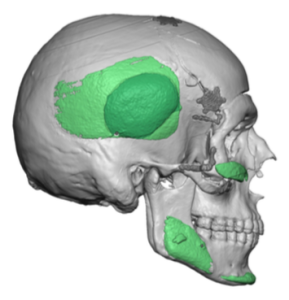
A custom skull implant was designed that made the head wider/fuller and taller. It covered most of the skull leaving out the central forehead and the very back of the head. Emphasis was on a temporal widening effect. Its total volume was 208ccs. Due to its large size a two piece design was created with a V-shaped split line across the top.
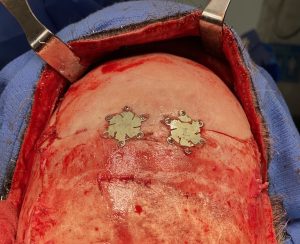

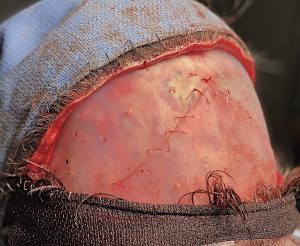
Large custom skull implants which cover a lot of the skull’s surface don’t have to be very thick to have a substantial effect. Placing them has its challenges and getting all edges to fit and lay perfectly flat is not as simple as merely placing it on a skull model. The two piece design approach allows the implant to be placed sequentially by which making it fit is easier and more assured.
Case Highlights:
1) Some craniofacial operations on the orbit and forehead can result in atrophic soft tissue changes. In cases of aesthetic orbital box osteotomies for increasing the distance between the eyes, wider eyes can make the rest of the head seem too narrow.
2) The most effective method to create a wider and fuller head shape is with a thin but large surface area coverage custom skull implant.
3) A two piece design and placement approach works best in large custom skull implants.
Dr. Barry Eppley
Indianapolis, Indiana

